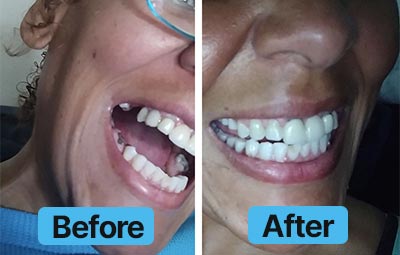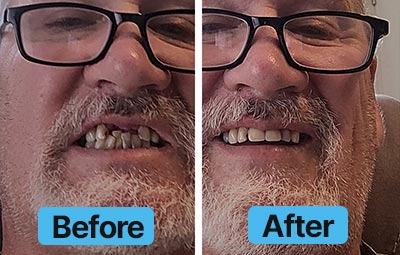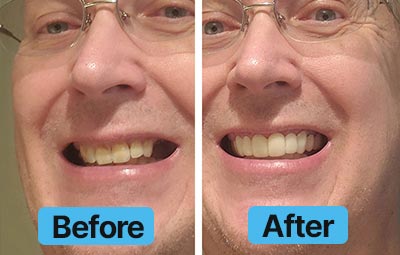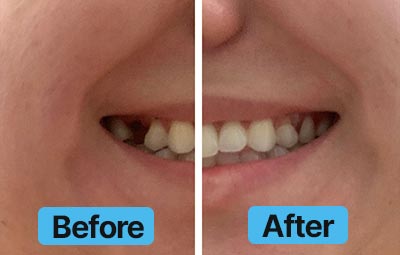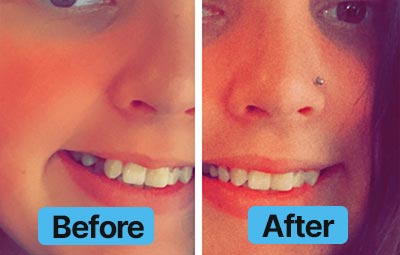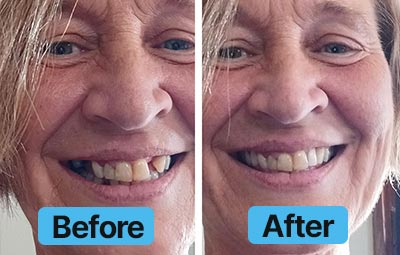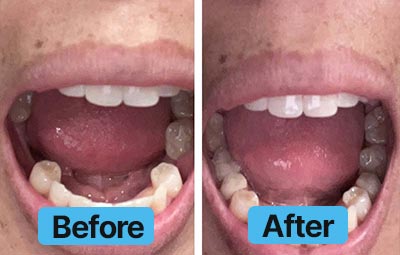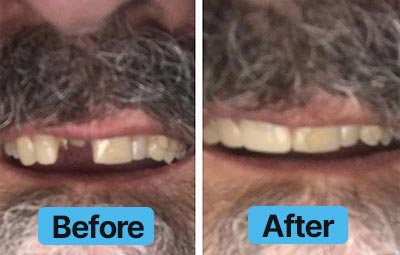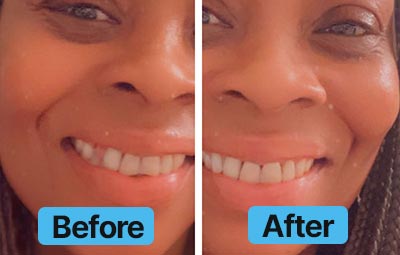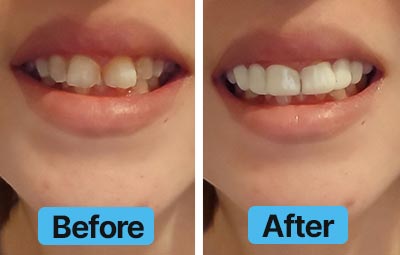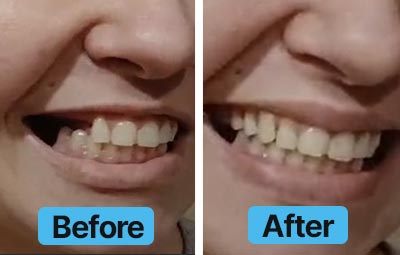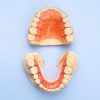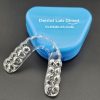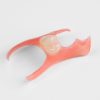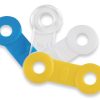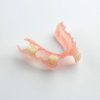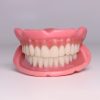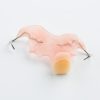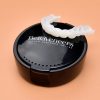Loose dentures can turn eating into a chore and smiling into a gamble. Ill fitting dentures will slip, rub your gums raw, and steal your confidence. Left unfixed, these uncomfortable devices can worsen mouth sores, gum issues, and jaw pain. Overall, not a great situation you want to be in.
But here’s the good news: simple (and AFFORDABLE!) at-home adjustments exist.
So, without further ado, here’s how to fix ill fitting dentures so you can finally eat your favorite foods and smile without worry or embarrassment.
What Causes Dentures to No Longer Fit?
Ill fitting dentures don’t happen overnight—they creep up slowly, one awkward bite at a time. Bones shrink. Gums recede. Dentures that once hugged your mouth perfectly might now rub against your gums uncomfortably.
Gradual bone loss often leads to poorly fitted dentures, particularly after tooth removal. Once teeth come out, the jawbone slowly shrinks, altering the natural shape of the mouth and making dentures slide around.
Gum disease will make this problem worse by weakening tissue that normally holds dentures in place.
Healthy gums slowly thin as inflammation heals following extractions, creating small gaps beneath new dentures. While this healing process is helpful at first, it eventually causes the dentures to slip, rub, and irritate your tender gums. Each of these subtle, natural changes ultimately leads to discomfort, difficulty chewing, and unstable dentures.
Dentures themselves can take a beating, but eventually, with daily wear and tear, it makes them unwearable. Over time, tiny cracks or chips form in the plastic base, distorting their original shape and weakening the overall fit. Mishandling dentures, such as dropping them by accident (repeatedly) or soaking them in overly hot water, may cause subtle warping. These changes then produce gaps that allow irritating bits of food to wedge between the gums and dentures (which means painful irritation and sores).
Even lifestyle choices can make your dentures no longer fit. Smoking, for example, inflames and irritates gums, creating swelling that ruins how your dentures fit. Acidic foods can also cause more inflammation. Sometimes, allergies to denture materials trigger swelling, redness, and pain, too.
And those are the problems you face if your dentures actually fit well in the first place. For many people, dentures are uncomfortable to begin with! So what’s a denture-wearer to do when their devices aren’t comfortable? How do you fix ill fitting dentures and finally get some relief? Glad you asked. Keep reading.
Practical Solutions for Ill Fitting Dentures
Not all denture issues need a dentist right away. Many denture-wearers find success fixing minor issues right at home. So here’s what actually works:
Start with a Simple Reline
A quick reline is often the easiest way to fix ill fitting dentures that slip or cause irritation. Dentures loosen as your gums change shape, but an at-home reliner, like Quick Reline, makes it simple to restore your dentures to its former glory.
Quick Reline is really easy to use:
- Heat it in boiling water for 30 seconds,
- let it cool for another 30 seconds,
- then mold it to your denture.
If it doesn’t fit perfectly the first time (or your mouth changes shape again), you can reheat and remold the material until it fits just right.
Because Quick Reline uses NuvoFlex material, it’s sturdy yet flexible enough to provide stable support and stays secure without frequent replacements, often lasting years.
Try Using Adhesive (Temporarily)
If you’re in a pinch, dental adhesives like creams, powders, and strips, can quickly stop your dentures from moving around. But while they work great, they probably shouldn’t be your permanent solution for ill fitting dentures.
If you find yourself constantly reaching for adhesive, you’re better off readjusting or realigning your dentures. It’ll save you more time and money in the long run.
Check If Your Dentures Still Have Life Left
Now, before investing too much time in relining or using adhesives, make sure your dentures aren’t significantly damaged in the first place.
Do this by looking for chips, cracks, or warping in your dentures. These are problems that might not be fixable. So if they seem badly damaged, consider getting a replacement instead.
Try a Custom Denture That You Fit Yourself
If you’ve struggled from day one with dentures that never quite fit right (or you need a new replacement), it might be time to consider a fully customized solution at home. Easy Denture lets you create a denture designed precisely for your mouth in under five minutes without messy impressions or expensive dental appointments.
With Easy Denture’s patent-pending moldable acrylic, you heat, shape, and wear dentures immediately. Better still, they can be refitted up to 20 times, meaning adjustments are easy as your gums change shape.
This option saves money, time, frustration, and repeated dental visits, finally giving you dentures that feel natural and secure.
Don’t Settle for Ill Fitting Dentures — Fix the Problem Today
Ill fitting dentures don’t need to become your new normal. With simple at-home solutions like Quick Reline or Easy Denture, comfort and confidence are within reach. Stop struggling through every meal or hiding your smile—take control today.
Visit Dental Lab Direct and see how easy getting a great fit can be!
 30 DAY warranty on all custom-made products | 1,000+ 5 Star ★★★★★ Reviews
30 DAY warranty on all custom-made products | 1,000+ 5 Star ★★★★★ Reviews


